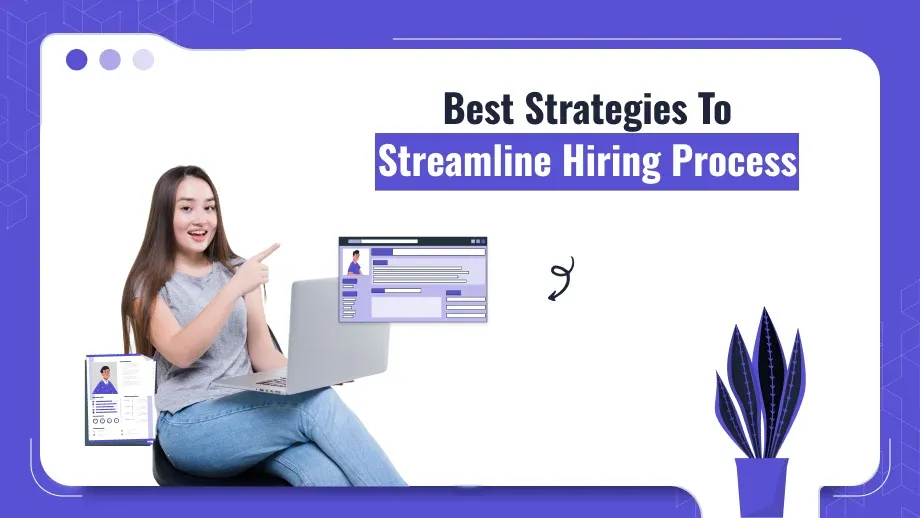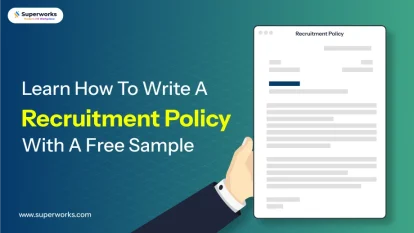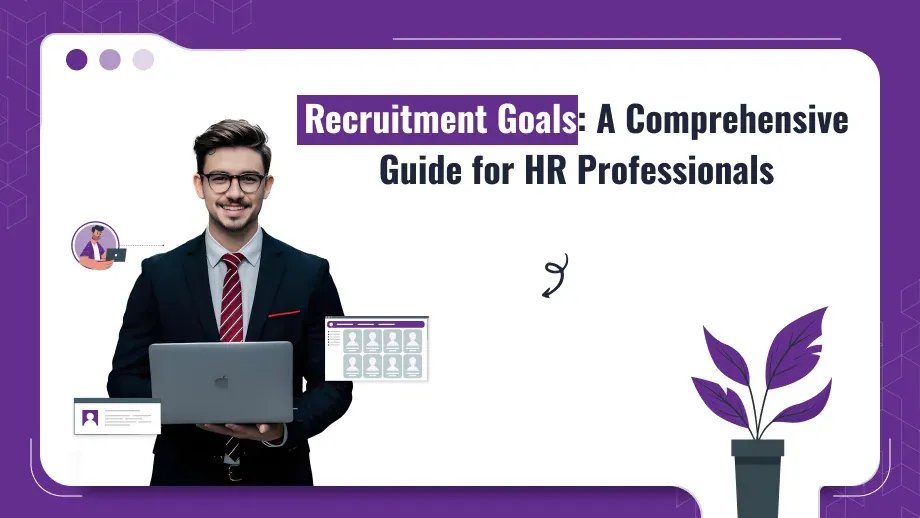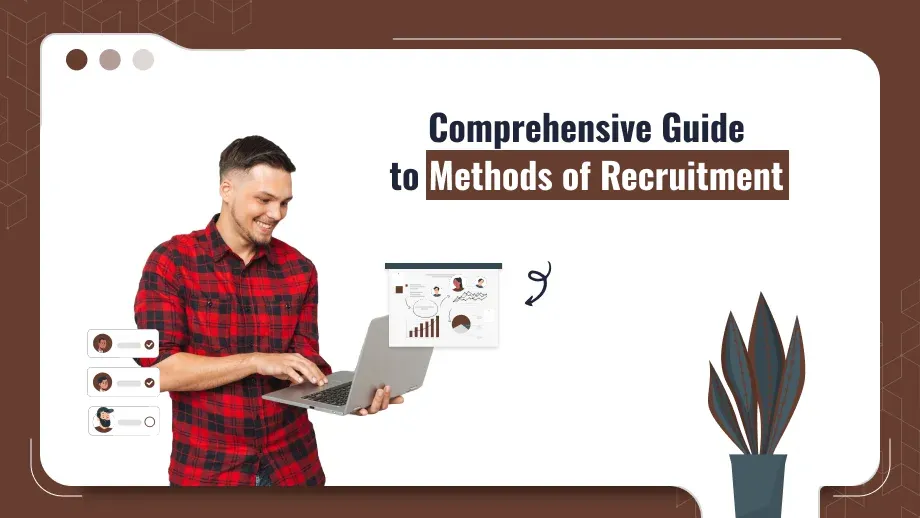
The biggest challenge companies face in today’s job market is the time and effort it takes to hire the right candidates. A poorly managed hiring process can drain resources, delay projects, and hurt the candidate experience. If you streamline hiring process, you can significantly reduce time-to-fill, lower costs, and improve the quality of hires.
In this article, we’ll walk through 13 noteworthy procedures to make your enlistment handle more effective, from executing an 11-step enrollment arrangement to making strides in candidate encounters, streamline hiring process, and utilizing automation.
The Importance of Streamlining Hiring Process
Cost Efficiency:
A streamlined enlisting handle cuts superfluous costs by lessening the time spent on candidate screening, interviews, and decision-making. The more effective the preparation, the fewer assets you spend per hire.
Time Savings:
The speedier you enlist, the less time your organization has to bargain with understaffing or empty parts. A long enlisting prepare might result in missed trade openings or postponed projects.
Improved Candidate Experience:
Candidates anticipate quick reactions and straightforward communication. Streamline contracting preparation keeps candidates locked in and energized almost working for your company. An ineffectively overseen enrollment preparation can lead to beat candidates dropping out.
Better Hiring Decisions:
Streamlining guarantees that each step in the enlisting handle is centered on selecting the right candidate, not fair filling a position. It leads to more data-driven choices, diminishing the hazard of terrible contracts that might take a toll on the company’s time and money.
Competitive Advantage:
In competitive work markets, companies with a streamlined enlisting handle can secure beat ability sometime recently competitors indeed wrap up there, to begin with a circular of interviews.
Company Reputation:
A well-managed enrollment handle increases your company’s notoriety. Candidates who involvement smooth enlisting are more likely to prescribe your company, indeed if they aren’t selected.
Global Recruitment:
Managing the global recruitment process requires a steady approach. A streamlined contracting handle guarantees that your company can effectively contract ability around the world while complying with territorial regulations.
Scalability:
As your company develops, a streamlined preparation makes it simpler to scale enrollment endeavors, permitting you to contract more individuals speedier without relinquishing quality.
Is your hiring process slowing you down?
Find out how you can optimize your recruitment pipeline so that you can hire faster and better.
Strategies For Streamline Hiring Process
Automate Repetitive Tasks
Automation is key to speeding up the enrollment preparation. Apparatuses like Candidate Following Frameworks Applicant Tracking Systems can computerize planning interviews, sifting resumes, and sending follow-up emails. This diminishes the workload on HR groups and guarantees candidates move through the pipeline faster.
- Tools to Use: ATS, interview scheduling tools, and email automation software.
- Impact: A streamline hiring process leads to faster decision-making and better candidate tracking.
Standardize Interview Questions and Formats
Standardizing your interview process in HRM can offer assistance to streamline contracting choices and guarantee candidates are assessed reasonably and reliably. This is especially imperative when different questioners are involved.
- Implementation: Utilize ATS to keep track of potential candidates and keep up connections with detached candidates.
- Impact: Decreases time-to-fill for basic parts and streamline contracting handle.
Construct and Keep up an Ability Pipeline
Maintaining a pipeline of potential candidates for future parts can essentially decrease the time spent sourcing when positions open. A Candidate Administration Framework makes a difference HR groups track and sustain connections with potential candidates.
- Implementation: Utilize ATS to keep track of potential candidates and keep up connections with inactive candidates.
- Impact: Diminishes time-to-fill for basic parts and streamlines the contracting process.
Write Clear and Brief Work Descriptions
Clear work portrayals draw in the right candidates, making it simpler to channel applications. Maintain a strategic distance from dubious dialect and be particular about the capabilities and abilities required.
- Best Hones: Utilize basic dialect, incorporate center obligations, and specify must-have skills.
- Impact: Makes strides in the quality of applications and decreases the number of unessential resumes, making a difference in streamlining the enlisting process.
Leverage Employee Referral Programs
Employee referral programs offer assistance to companies’ contracts quicker since candidates alluded by current workers are more likely to be a great fit for the company’s culture and values. Referrals regularly move through the handle speedier and are ordinarily higher quality.
- How to Actualize: Empower workers to allude to qualified candidates and offer incentives.
- Impact: Speeds up the enlisting preparation and progresses representative engagement.
Use Pre-Employment Assessments
Pre-employment appraisals offer assistance to HR groups screen for the right candidates early in the steps in recruitment. Instruments like the Talent Assessment Tool can test for particular abilities, cognitive capacities, and identity traits.
- Best Hones: Utilize evaluations custom-fitted to the work part and required competencies.
- Impact: Guarantees as it were qualified candidates move forward, streamlining the enlisting preparation and diminishing pointless interviews.
Implement Recruitment Metrics and KPIs
Tracking key measurements such as time-to-hire, cost-per-hire, and source of enlist can offer assistance to HR groups in distinguishing bottlenecks and zones for change. Data-driven enrollment makes a difference in streamlining contracting preparation over time.
- Key Measurements to Track: Time-to-hire, cost-per-hire, quality-of-hire.
- Impact: Increments proficiency by ceaselessly optimizing the enlistment handle in management.
Outsource for Niche or High-Volume Hiring
For specialized parts or amid periods of tall request, outsourcing certain viewpoints of enrollment can be advantageous. Enlistment Prepare Outsourcing (RPO) or outside enrollment offices can give the additional bolster required to meet enlisting goals.
- When to Outsource: Specialty parts, high-volume periods, or hard-to-fill positions.
- Impact: Permits inside HR groups to center on key assignments and streamline the contracting process.
Use Social Media and Niche Job Boards
Social media stages like LinkedIn, Twitter, and industry-specific worksheets offer assistance to companies to reach more significant candidates more speedier. These stages can be utilized to target particular businesses or work parts, making a difference in streamlining the enlisting process.
- How to Execute: Utilize focus on work postings, hashtags, and worker networks.
- Impact: Increments the quality of candidates and decreases sourcing time.
Improve the Candidate’s Experience
Improving the overall candidate experience is crucial for keeping top talent engaged. A streamline hiring process that provides timely feedback and clear communication helps prevent candidates from dropping out.
- Best Practices: Ensure fast communication, provide clear timelines, and simplify the application process.
- Impact: Reduces candidate drop-offs and improves your employer brand.
Use Data to Drive Hiring Decisions
Leverage data analytics to improve decision-making in your Streamline Hiring Process. By analyzing past hiring data, you can predict trends and make adjustments to recruitment strategies for better outcomes.
- How to Implement: Use data from your ATS or HR analytics platform to track and analyze hiring trends.
- Impact: Helps in identifying patterns, improving candidate quality, and streamlining the Streamline Hiring Process.
Streamline Onboarding to Reduce Time-to-Productivity
Streamlining onboarding is the last step in optimizing your enlisting handle. A quick and well-organized onboarding preparation guarantees modern contracts are profitable as before long as conceivable, diminishing downtime and maximizing ROI on hiring.
- Best Hones: Utilize advanced onboarding apparatuses, plan a clear preparation arrangement, and give back all through the onboarding process.
- Impact: Diminishes the time it takes for modern contracts to get to be profitable, completing the streamlined enlisting process.
Common Challenges In Streamline Hiring Process
Lack of a Strategic Hiring Plan
One of the biggest challenges is the absence of a Strategic Hiring Plan. Without a clear plan, HR teams may struggle to align recruitment goals with broader company objectives, leading to inconsistency in the Streamline Hiring Process.
- Impact: Inconsistent hiring practices, delays in decision-making, and confusion about the types of candidates needed for specific roles.
- Solution: Develop a Strategic Hiring Plan that aligns with company goals, outlining objectives, timelines, and responsibilities for each team member.
Technology Gaps
Many organizations still depend on obsolete apparatuses or manual forms that make it troublesome to streamline enlisting preparation. Without cutting-edge devices such as Candidate Following Frameworks (ATS) or Candidate Administration Frameworks, HR experts spend as well much time on tedious assignments like sorting through resumes or planning interviews.
- Impact: Slower enlisting forms and expanded chances of human blunder in overseeing candidate data.
- Solution: Contribute to a coordinated ATS or Candidate Administration Framework to computerize errands and centralize information, guaranteeing a smoother workflow and diminishing manual labor.
Inconsistent Screening and Interview Processes
A need for standardized screening and meet forms frequently leads to delays. When contracting supervisors don’t utilize steady criteria, they take longer to make choices, which can cause candidates to lose interest.
- Impact: Longer decision-making times, conflicting candidate assessments, and expanded inclination in hiring.
- Solution: Execute standardized screening questions, utilize Ability Evaluation Apparatuses, and give organized meet groups to guarantee consistency and reasonableness all through the meet handle in HRM.
- Bottlenecks in Communication
Bottlenecks in Communication
Miscommunication between HR groups, contracting supervisors, and candidates is a common challenge. Misaligned plans, vague information, and postponed criticism moderate the enlistment preparation, driving to potential candidates drop out of the pipeline.
- Impact: Delays in candidate communication, missed openings, and candidate frustration.
- Solution: Utilize communication devices like Slack, Trello, or mail computerization to guarantee clear, real-time overhauls over groups. Set due dates for giving input and making choices to anticipate delays and keep candidates engaged.
Internal Approval Delays
In numerous companies, the enlistment prepare slows down due to long inner endorsement chains. Having as well numerous partners included in the decision-making handle can moderate the time it takes to amplify offers, which is particularly destructive when competing for beat talent.
- Impact: Missed openings, especially with profoundly qualified candidates, who may acknowledge offers somewhere else while holding up for approvals.
- Solution: Streamline the inside endorsement handle by constraining the number of decision-makers and utilizing a computer program that mechanizes the endorsement workflow.
High Candidate Drop-Off Rates
Candidates frequently drop out of the enlisting handle if it takes too long or if communication is vague. Long crevices between stages, combined with deficient input, can cause disappointment and lead candidates to seek openings with other companies.
- Impact: Expanded dropout rates, misfortune of best candidates, and potential negative effect on manager brand.
- Solution: Keep up standard communication with candidates, give clear timelines, and guarantee candidates know where they stand at all times. Utilizing an ATS for the candidate following can offer assistance robotize customary upgrades, making a difference in streamlining the enlisting process.
Difficulty Scaling Recruitment
As companies grow, they may struggle to scale their recruitment efforts efficiently. High-volume recruitment can overwhelm HR teams, particularly if they lack a flexible system in place for managing increased demand.
- Impact: Slower hiring times, lower quality of hires, and overwhelmed HR teams.
- Solution: Build a talent pipeline using a Candidate Management System and continuously nurture relationships with potential candidates. This helps HR teams manage high-volume recruitment periods and fill positions quickly.
Lack of Recruitment Metrics
Many companies fall flat to screen fundamental enrollment measurements like time-to-hire, cost-per-hire, and quality-of-hire. Without this information, it’s troublesome to distinguish wasteful aspects or progress the enlistment preparation over time.
- Impact: Failure to degree prepare adequacy and distinguish regions for improvement.
- Solution: Execute enrollment KPIs to track execution. Utilize information analytics to optimize each organization of the contracting handle and drive nonstop improvement.
Challenges in Filling Niche Roles
Recruiting for profoundly specialized or hard-to-fill parts regularly presents special challenges. Conventional worksheets may not surrender qualified candidates, and the specialty nature of the part may make sourcing difficult.
- Impact: Amplified time-to-hire, dissatisfaction with enlisting directors, and dependence on more costly enlistment methods.
- Solution: Use specialty worksheets, proficient affiliations, and representative referral programs to target the right ability pools. Utilizing a Key Contracting Arrange for specialty parts can offer assistance clarify objectives and sourcing strategies.
Identifying Candidate Red Flags and Bias
Sometimes, HR teams are unsure about Interview Red Flags, leading to delayed decision-making as they seek additional opinions or conduct further assessments. This can drag out the Streamline Hiring Process unnecessarily.
- Impact: Delays in decision-making, potential loss of strong candidates, and bias in hiring decisions.
- Solution: Train hiring managers to identify Interview Red Flags early in the process and use clear evaluation criteria to make swift decisions. Having standardized criteria helps reduce bias and speeds up the Streamline Hiring Process.
Conclusion
Overcoming the challenges to Streamline Hiring Process the contracting handle requires a combination of innovation, clear communication, standardized hones, and data-driven decision-making. By tending to these boundaries, organizations can optimize their enrollment endeavors, progress candidate encounters, and eventually make way better contracts faster.





